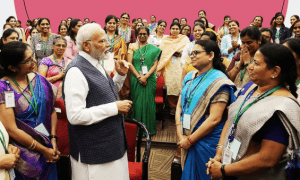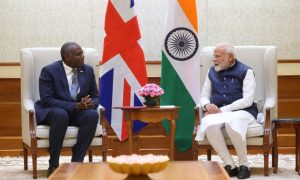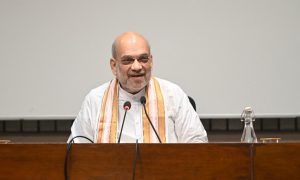India’s third mission to the Moon,
Chandrayaan-3, is at an advanced stage of realisation and the mission is being planned for launch in 2022, minister of state for the department of space, Jitendra Singh, stated in a written response to a question in the Lok Sabha recently.
The Moon mission was earlier planned to be launched in early 2021, but got shelved due to the ongoing pandemic.
“The spacecraft is in ‘advanced stages’ of realisation, with the propulsion system already built and undergoing tests. The lander structure has also been built and is currently being fitted with its propulsion system,” the minister added.
The mission will involve a lander and a small rover similar to Chandrayaan-2, India’s second mission to the Moon, but no orbiter.
The 2019 Chandrayaan-2 mission successfully put an orbiter around the moon.
Chandrayaan-3 is expected to target the Lunar South Pole, around 70.9 degrees south of the lunar equator. The Chandrayaan-2 orbiter will operate as a communications relay for the Chandrayaan-3 lander.
A successful Chandrayaan-3 will make India the fourth country to successfully soft-land on the moon.
Furthermore, Isro has planned two missions in December this year – the first unmanned flight under the Gaganyaan mission, and India’s first solar mission, Aditya L1.
Gaganyaan
The human spaceflight module of Gaganyaan will bring India’s human spaceflight programme one step closer to sending humans to low earth orbit. There are four test pilots selected for the mission, who are currently undergoing training in Russia. The final mission will be undertaken after a successful second unmanned flight scheduled for next year.
Aditya-L1
The solar mission, Aditya L-1 aims at sending a satellite 1.5 million kilometres away to the Lagrangian point, between the Earth and the Sun, which is where the gravitational pull of both the bodies on the satellite is equal to the centripetal force needed to keep the satellite in orbit.
These points are like parking spots in space from where a satellite can make observations without expending much fuel. This point between the Earth and the Sun allows an uninterrupted view of the Sun.
According to ISRO, the mission aims to carry six scientific payloads that will study the visible surface of the sun (photosphere), the layer of plasma called corona that extends for thousands of kilometers and has a temperature of around 6,000 Kelvin (5726.85 degrees Celsius).






















 WhatsApp us
WhatsApp us